
It is imperative that when enjoying a walk or a hike you are prepared for every situation. While walking and hiking is great exercise and a very enjoyable experience, particularly for those who enjoy being in nature, it can also be dangerous depending on the situation. Having first aid supplies close at hand could be the difference between life and death for some people.
Find out how you can prepare for your next adventure, be it a quick stroll through some fields or an overnight hike with camping in this article.
Essential contents of a first aid kit for walking
As with all first aid kits, the requirements will change depending on the type of walk you are embarking on and how long it will last, however there are some essential first aid supplies that should be carried every time you go on a walk. These include:- Blister plasters, particularly if your shoes or those of one of your fellow walkers are new.
- Bandages – this includes triangular bandages, crepe bandages and conforming bandages preferably in a range of sizes to suit any situation.
- Disposable gloves to limit the risk of infection and cross contamination.
- Washproof or fabric plasters, the type will depend on if you expect to be getting the plaster wet which could affect the adhesive quality of the plaster or if you would prefer to have the stronger fabric plasters.
- Sterile moist wipes are ideal for wound cleansing so that debris and other contaminants are cleared from the wound before it is dressed.
- Clothing cutters to remove any clothing that is restricting access to an injury.
- Safety pins to secure bandages when needed.
- Hand sanitiser is a perfect addition for hand cleaning when there is no water available, particularly if you have run out of gloves.
- Eye wash pods to rinse out eyes when they have come into contact with contaminants and there is not enough clean water available.
- Instant ice packs to treat sprains and strains.
- Face shields to prevent contamination should someone in the group require CPR.
Recommended contents of a first aid kit for walking
The type of walk that you are embarking on can have an impact on what you may require in your first aid kit. For example, if you are expecting to be following well-maintained and level paths you will likely only need basic first aid supplies, however if you intend to go off the beaten track or hike for several hours, having a more comprehensive hiking first aid kit will ensure you have the supplies for every situation.Personal health conditions such as asthma, allergies and weak joints can also impact the contents of your walking first aid kit. For example, if you know your ankle is weak, you may decide to use kinesiology tape when walking to strengthen the joint.
For short walks
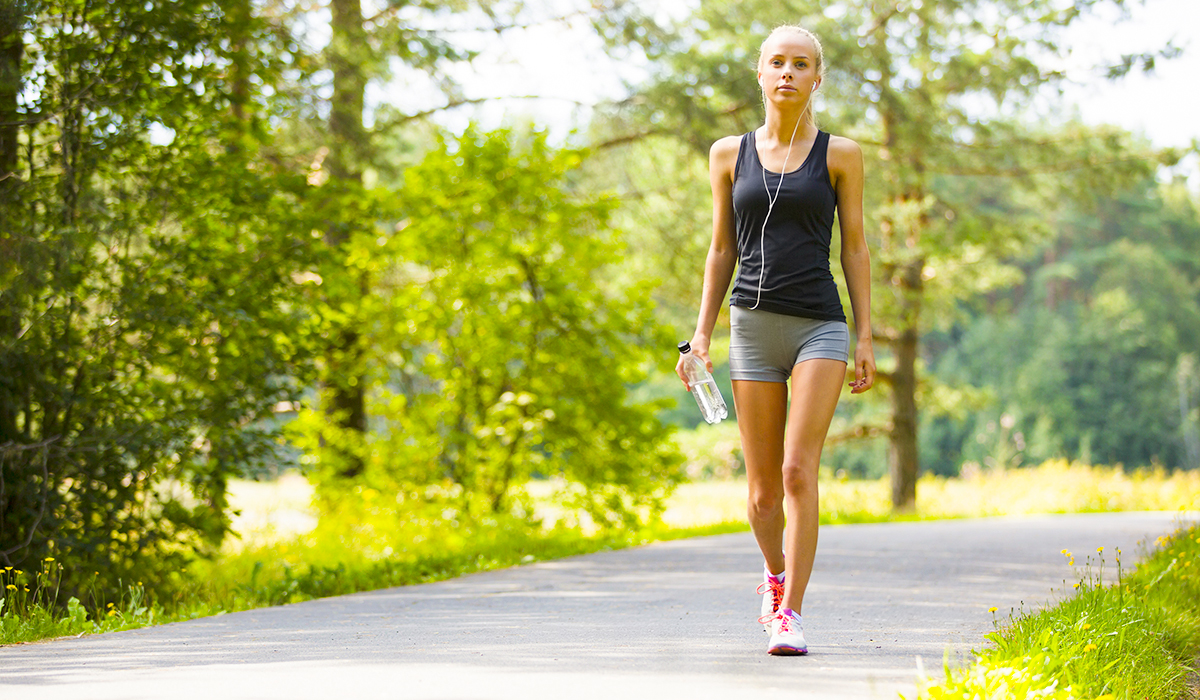
If you are planning a short walk on well-maintained foot paths that, for the most part, are fairly flat, you won’t have much need for any additional first aid supplies except for any personal medication such as an inhaler or antihistamines.
However, if there is the possibility that your walk will lead you through an area of high grass, having a tick remover available is recommended as a precaution.
For long hikes

Longer hikes increase the risk of injury and will take you further away from emergency services should you require help. As such, it is important to take into consideration the types of injuries that could occur and plan for them to ensure you are prepared.
In addition to the essential first aid supplies mentioned earlier, we’d recommend:
- A tick remover or other tweezers
- Foil blankets
- An emergency splint
- An emergency light
- A whistle
- Burn dressings or sachets
If you are regularly going on hikes that will lead you away from where emergency services can easily reach you, it would be advisable to undergo some first aid training, so that in an emergency there is no confusion on how to use a dressing or which bandage to use.
For camping trips
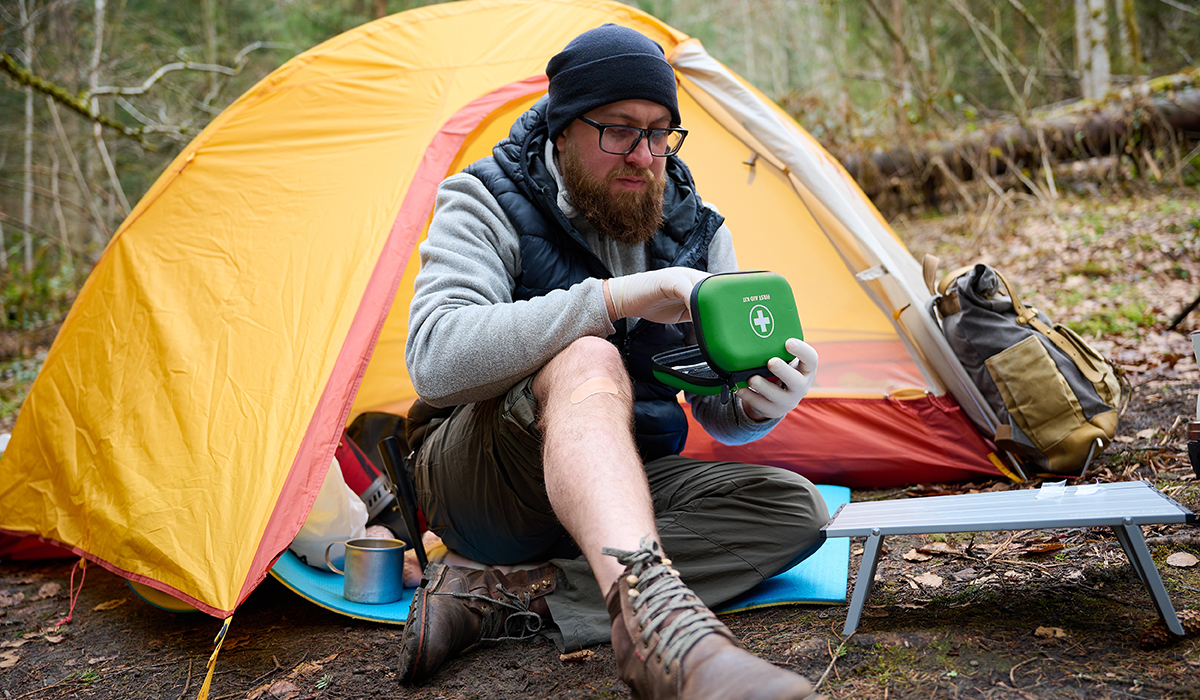
Being immersed in nature is some people’s idea of heaven, seeing all of the natural wonders that this world has to offer. However, it doesn’t come without risk. Having first aid supplies at your disposal when camping is a necessity, particularly if it is in a location where emergency services will take longer than the eight minute target to reach you.
If you are planning on camping at a manned site, it is likely that they will have a first aid kit available in the site office or various locations, however it is always better to have your own as you will know exactly where it is and what is inside it. If you are planning on going wild camping it is essential to have a comprehensive first aid kit at your disposal, particularly if you are further away from the nearest town.
Our Adventurer First Aid Kit provides a comprehensive selection of supplies ideal for camping trips. Including the essential equipment and other recommended items such as:
- HypaGuard Tick Remover
- HypaCover Skin Closure Strips
- HypaCover Gauze Swabs
- HypaSoothe Burn Gel Sachets
Other first aid supplies we would recommend you consider include:
If you are spending prolonged periods of time outdoors it may also be worth enrolling on a first aid course, as knowing things like which dressing to use in different situations such as adhesive and low adherent can help immensely in emergencies.
For backpacking groups
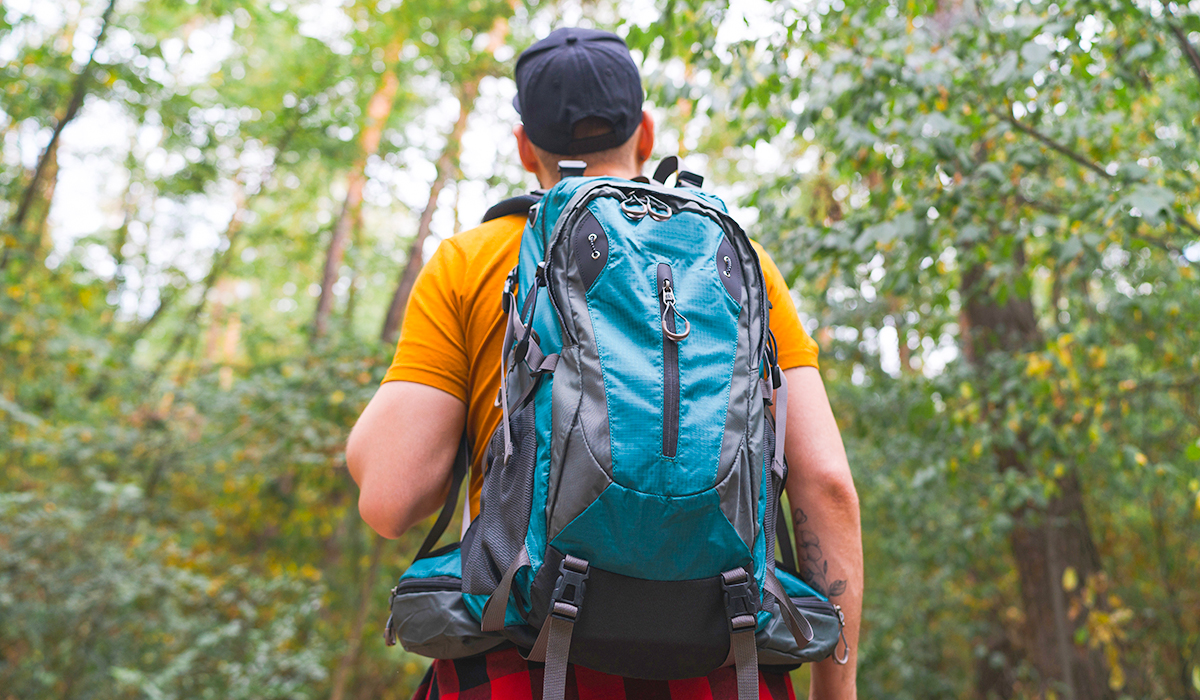
Backpacking has become increasingly common over the years, providing a sense of adventure to many who love to travel, which makes having a decent travel first aid kit even more essential to treat injuries on the go.
For backpacking groups, we would generally recommend the same supplies as for campers, to ensure that they are covered for all eventualities and are able to stabilise an injury or provide immediate first aid while waiting for medical professionals to reach your location. This includes items such as:
- HypaGuard Tick Remover
- HypaCover Skin Closure Strips
- HypaCover Gauze Swabs
- HypaSoothe Burn Gel Sachets
For extreme weather
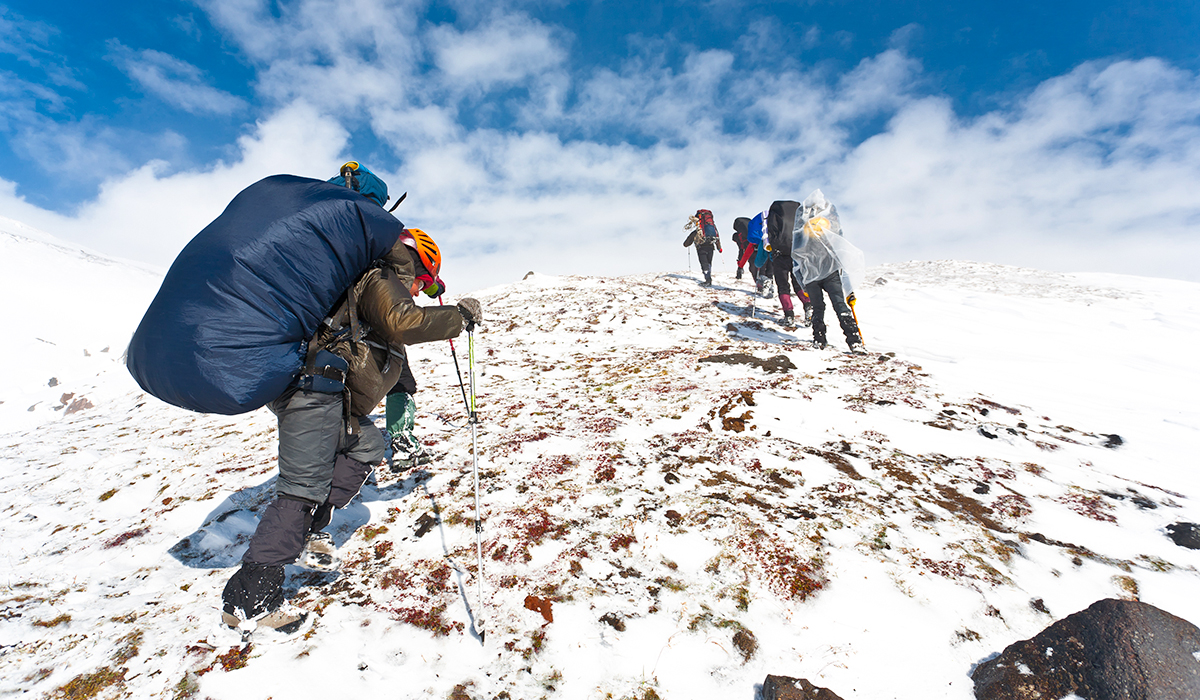
Weather can significantly impact your safety while walking or hiking, especially in regions where conditions change rapidly. As a basic rule, you should always check the weather forecast before setting out and make sure you are prepared in case circumstances change.
If you are going on a hike in wintery conditions such as snow and ice, ensure that you are aware of your footing and how to treat sprains or other injuries that can occur through slips, trips and falls as these are the most common injuries you can sustain even in good weather conditions. You should also ensure that foil blankets are included in your first aid kits as these will keep you warm should you get lost or find yourself immobile after an accident.
In the summer months, your first aid kit should be adapted to include items such as sun cream and plenty of water; you could also include a foil blanket and use it in reverse to cool someone down by reflecting the heat away from them. Take precautions with plenty of breaks and be sure to stay hydrated, so that you don’t suffer from heat exhaustion or stroke while enjoying the great outdoors.
Additional first aid supplies we'd recommend for extreme weather include:
- Foil blankets
- An emergency splint
- An emergency light
- A whistle
- Instant cold packs
- HypaSoothe Burn Gel Sachets
- Tourniquets
- Haemostatic gauze
Should you make your own or buy a ready-made first aid kit?
When choosing a first aid kit, most people will be drawn to a ready-made kit, like our one for outdoor pursuits as they tend to include the essential supplies needed for the activity they were created for. Others prefer to create their own kits, purchasing an empty case and filling it with supplies that are personal to them.Ready-made first aid kits tend to be more cost efficient and include all of the essential supplies already, although some will also provide more comprehensive cover depending on the kit you choose, such as our Adventurer First aid Kit. If there are items that you wish to add to a pre-made kit, such as an inhaler, antihistamines or potentially an emergency splint, you are able to do this. It is easy to build upon the pre-made kit if needed to ensure it matches your standards for your walks.
If you create your own kit, you will be starting from scratch and require an empty bag or case, the size could vary from a small belt pouch to a large run bag depending on your criteria. You would then need to ensure you had all of the basic supplies to fill it such as bandages and plasters but be selective in which type you pack. For example, you may want to include only compression bandages and finger plasters instead of a broad variety because of the conditions for that day’s specific hike.
Whichever type of first aid kit you choose, it is important that you carry it with you on your walk so that you have supplies ready and available in emergencies.
Not sure where to start? Our ready made Adventurer First Aid Kit offers everything you need in one compact pack.
Pre-hike checklist & maintenance tips
It is imperative that your hiking first aid kit is maintained otherwise you run the risk of being injured with no supplies at your disposal and emergency services struggling to reach your location in time.Remember to check that everything is still in date before setting off and that none of the packaging on your supplies has been damaged as this can affect the quality of the product.
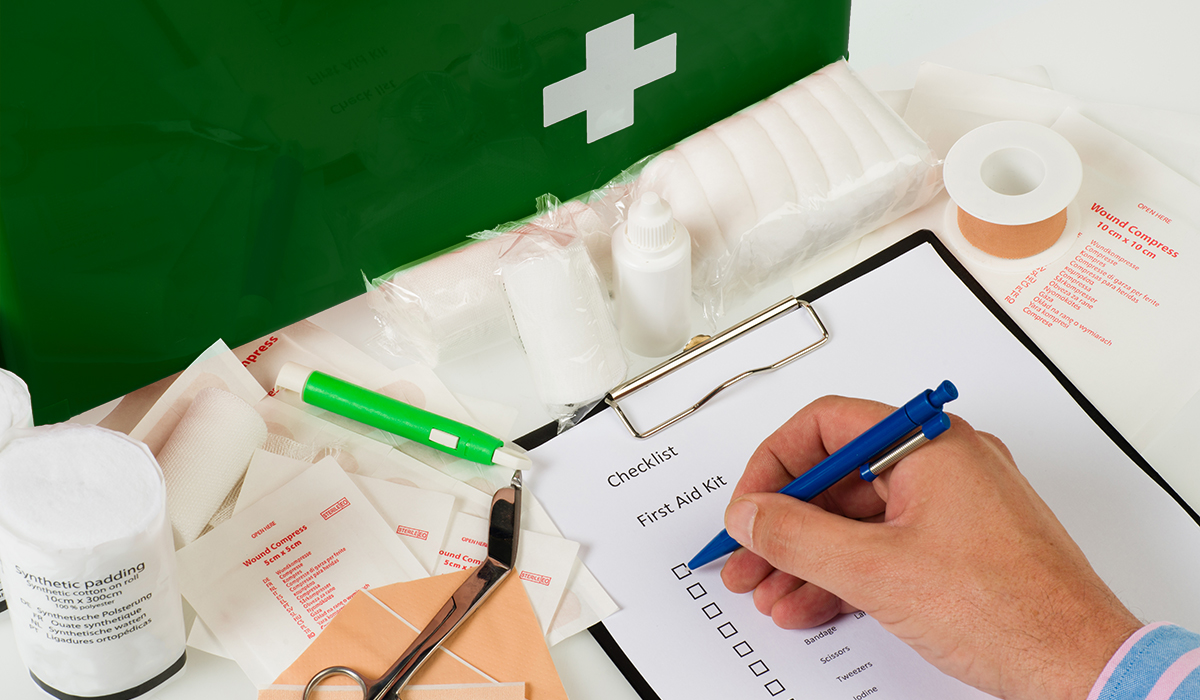
Pre-hike first aid checklist:
- Plasters
- Bandages
- Disposable gloves
- Sterile moist wipes
- Clothing cutters
- Safety pins
- Hand sanitiser
- Eye wash pods
- Instant cold packs
- Face shields
- Tweezers
- Burn treatment
- Foil blankets
- Catastrophic bleeding
- Wound closure strips
- Other emergency supplies
- Personal items
- Inhaler
- Antihistamines
- Kinesiology tape
Safety essentials for walkers and hikers
It can be a wonderful feeling exploring the great outdoors and venturing off the beaten track on walks and hikes. However, there is always a risk of injury, so preparing for the worst will ensure that you won’t be caught out if it does happen.Having a first aid kit available to you is essential, whether you are taking a short walk or an overnight hike that involves wild camping. Make sure that you check the weather forecast and have your kit fully stocked for the conditions you will be travelling in before setting out.
Whether you're heading out for a short walk or a week-long expedition, explore our range of hiking and outdoor first aid kits to ensure you and your group are fully prepared.
Read our other blogs for more information on first aid or contact us for further advice and information on our products.
By Sarah Mason
Explore more:

